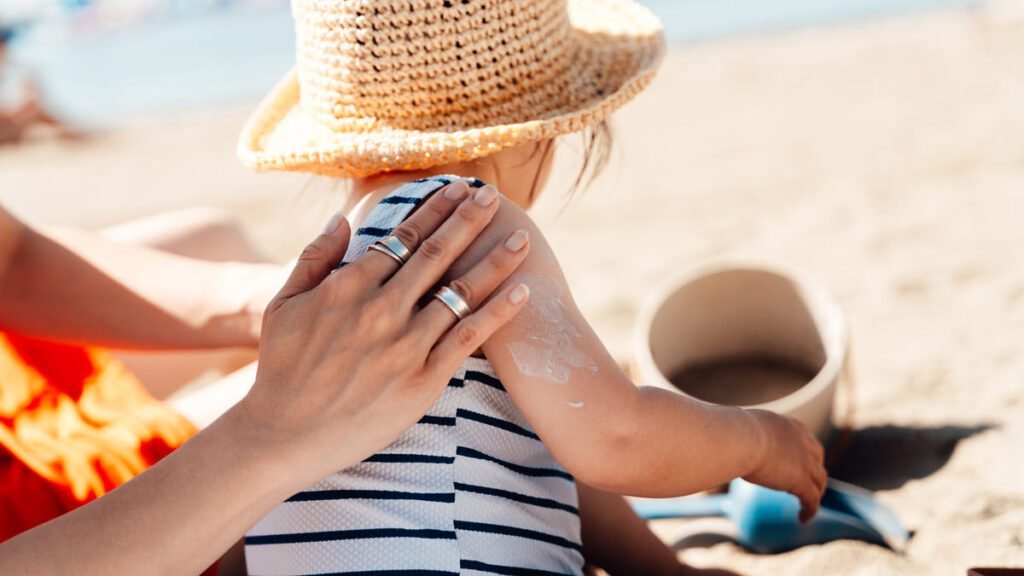Essential Sun Protection Tips for Parents: Keep Your Kids Safe
As a parent, ensuring your child’s well-being is your top priority—especially when it comes to sun protection. With numerous choices available, selecting the right sunscreen and practices can feel overwhelming. Here’s a comprehensive guide on how to keep your little ones safe from harmful UV rays while enjoying the great outdoors.
Choosing the Right Sunscreen
Opt for Broad-Spectrum Protection
- SPF Matters: Look for a broad-spectrum sunscreen with at least SPF 30. This is the minimum recommended by the American Academy of Dermatology and dermatologists like Antaya and Silverberg.
- Understand SPF: SPF indicates how long you can stay in the sun without getting burned compared to not wearing sunscreen. For instance, SPF 30 theoretically allows 30 times longer sun exposure.
Know the Limitations of SPF
Research indicates that many sunscreens may not deliver their promised SPF levels, especially mineral formulas. Choosing a higher SPF can provide extra protection against this uncertainty. Consider consulting Consumer Reports for recommendations.
Supplement Sunscreen with Additional Protection
Cover Up with Clothing
Sunscreen is just one element of sun safety. Incorporate protective clothing:
- UPF-Rated Apparel: Select garments specifically designed to block UV rays, such as swim shirts and hats.
- Opt for Dark Colors: On lower UV index days, dark-colored, tightly woven fabrics can suffice. Avoid any clothing that is transparent when held up to light.
Additional Precautions for Infants
- Protect from Birth: Silverberg emphasizes that sun protection starts right from birth. Infants under six months should ideally avoid direct sunlight.
- Using Sunscreen: While shade is the best option, if necessary, use mineral sunscreen on small exposed areas for infants older than six months.
Navigating the Sunscreen Aisle
Kids’ vs. General Sunscreens
You don’t necessarily need to purchase sunscreens labeled for children. Many contain similar ingredients to those for adults and perform just as effectively.
Stay Informed About the UV Index
- Daily Sun Exposure: Check the day’s UV index via your weather app. Higher numbers indicate greater risk and the need for more diligent sun protection.
Selecting Ingredients Wisely
Mineral vs. Chemical Sunscreens
- Hybrid Approach: Consider a combination of mineral for everyday use and chemical when higher SPF is necessary for intense activities.
- Check for Harmful Additives: Avoid sunscreens with unwanted chemicals like PFAS and parabens to minimize risks.
Application Tips for Maximum Efficacy
- Timing is Key: Apply sunscreen at least 15 minutes before sun exposure.
- Use the Right Amount: Aim for about one ounce, the equivalent of a shot glass for most adults—children can use similar amounts based on their size.
- Areas Not to Forget: Don’t neglect places like ears, lips, and the scalp. Apply sunscreen to these areas or use UV-blocking sunglasses and hats for further protection.
Avoiding Sprays for Young Kids
Spray sunscreens can be convenient but may pose inhalation risks. If using sprays, apply them to your hands first rather than directly onto the child’s skin.
Reapplication Essentials
- Ensure sunscreen is reapplied every two hours, especially after swimming or sweating.
- The American Academy of Dermatology stresses that frequent reapplication is crucial for sustained protection.
Engaging Kids in Sun Protection
Encourage your children to take part in applying sunscreen. Here are some engaging strategies:
- Make it Fun: Incorporate games or songs while applying sunscreen.
- Teach Responsibility: As they grow older, allow them to take the lead in their sun protection routine.
Final Thoughts on Sun Safety
Invest time in educating your family about proper sun protection practices. Not only will this help prevent skin issues, but it will also instill lifelong habits that promote health and well-being. As Silverberg aptly puts it, "The family that sun protects together avoids skin cancer together."
Always consult your pediatrician or a dermatologist for tailored advice that considers individual health concerns or conditions. Stay vigilant, enjoy the sunshine, and keep your kids safe!
For more comprehensive guidelines, you can explore resources from reputable organizations such as CDC – Sun Safety and American Academy of Pediatrics.


